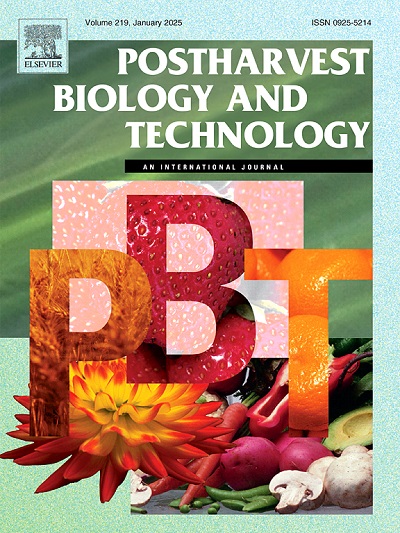Combined analyses of metabolomics and transcriptomics reveal the mechanism of DNP and ATP regulating the metabolisms of organic acids in pulp of longan fruit during storage
IF 6.4
1区 农林科学
Q1 AGRONOMY
引用次数: 0
Abstract
The quality deterioration in pulp of postharvest longan fruit is related to the increase in acidity during storage. However, the main organic acids and their regulatory mechanisms are still unrevealed. This study explored the impacts of 2,4-dinitrophenol (DNP) and adenosine triphosphate (ATP) treatments on the energy level and their influences on titratable acid (TA) contents in longan pulp. Compared with the control samples, lower levels of pulp energy charge, ATP and total soluble solids (TSS), but higher fruit respiration rate, pulp breakdown index and TA content were found in DNP-treated longans. Moreover, higher levels of four organic acids (fumaric acid, lactate, succinic acid, and oxaloacetate) were presented in DNP-treated samples through the analysis of targeted metabolome. However, the ATP treatment showed the opposite effects. The transcriptome analysis showed that differentially expressed genes (DEGs) among the three treatment groups were predominantly enriched in respiration metabolism pathways, including glycolysis, gluconeogenesis and tricarboxylic acid (TCA) cycle. In addition, weighted gene co-expression network analysis (WGCNA) identified four genes (DlSDH, DlLDH, DlSCS, and DlMDH) associated with the aforementioned metabolic pathways. RT-qPCR results exhibited that, during storage, these four genes in longan pulp were upregulated by DNP treatment and downregulated by ATP treatment. Therefore, energy deficit could promote the expression of DlSDH, DlLDH, DlSCS, and DlMDH, enhancing the metabolisms of glycolysis, gluconeogenesis, and TCA cycle, thereby accelerating the increase of organic acids in pulp of fresh longan during storage. This work revealed the main organic acids, the metabolic pathways, and the key genes involved in the increased acidity in pulp of postharvest longan fruit, as well as expanded our knowledge of energy regulating longan fruit quality and its relationship with the metabolism of organic acids.
求助全文
约1分钟内获得全文
求助全文
来源期刊

Postharvest Biology and Technology
农林科学-农艺学
CiteScore
12.00
自引率
11.40%
发文量
309
审稿时长
38 days
期刊介绍:
The journal is devoted exclusively to the publication of original papers, review articles and frontiers articles on biological and technological postharvest research. This includes the areas of postharvest storage, treatments and underpinning mechanisms, quality evaluation, packaging, handling and distribution of fresh horticultural crops including fruit, vegetables, flowers and nuts, but excluding grains, seeds and forages.
Papers reporting novel insights from fundamental and interdisciplinary research will be particularly encouraged. These disciplines include systems biology, bioinformatics, entomology, plant physiology, plant pathology, (bio)chemistry, engineering, modelling, and technologies for nondestructive testing.
Manuscripts on fresh food crops that will be further processed after postharvest storage, or on food processes beyond refrigeration, packaging and minimal processing will not be considered.
 求助内容:
求助内容: 应助结果提醒方式:
应助结果提醒方式:


